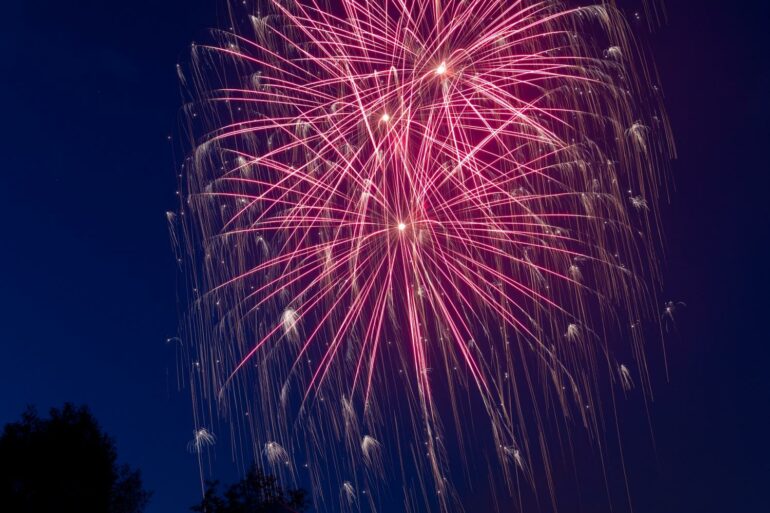As Independence Day approaches, Utahns are preparing to celebrate the nation’s birth with dazzling displays of light and color. However, a new BYU study published in Applied Geochemistry warns that these festivities come with an often-overlooked hazard: increased air pollution.
The study, led by BYU geology professor Greg Carling, reveals alarming details about the particulate matter that is released into the air when fireworks explode.
Particulate matter is a mixture of microscopic pieces of dust, trace metals, smoke, liquid droplets and other pollutants. Small particles such as PM2.5 pose the greatest threat to human health because they are easily inhaled and can get deep into the lungs.
Carling’s research notes that the largest contributors of particulate matter along the Wasatch Front are mineral dust, winter inversion and Utah’s beloved fireworks.
“We know we’re breathing in these particles that are unhealthy during firework events, dust storms, or winter inversions,” said Carling. “But what’s actually in the particulate matter? No one really knew before this study.”
Over two years, Carling and students monitored air samplers with filters collecting various sizes of particulate matter, including the notorious health hazard PM2.5. They measured the concentration of trace metals in particulate matter over time.
Their findings show that metal pollution in particulate matter peaks during January and July, coinciding with winter inversions and summer fireworks. Fireworks emit high levels of barium and copper, while arsenic, cadmium, lead, and thallium were prevalent in the inversion smog.
Prolonged exposure to these substances can cause various health problems, ranging from asthma to cardiovascular disease. Despite strict drinking water standards in Utah, similar air quality standards for these metals do not currently exist.
“We know a bit about the acute problems that elements such as lead cause,” said Carling. “But then there are the chronic problems we don’t know about, and that probably should make people think, “Oh, so what’s actually harmful and how do we figure out what’s harmful?'”
Carling emphasized that any concentration of particulate matter is hazardous to human health and the environment. “Metals are really good at moving around from the atmosphere into the soil, into the water and into our food,” warned Carling. “And they’re persistent, meaning that they don’t really go away—they just keep cycling through the system.”
Any firework that produces smoke or colored light significantly contributes to Utah’s air pollution, particularly given the two major firework holidays in July.
But Carling is optimistic that increased awareness will lead to better decision-making and solutions. He recommends that individuals take advantage of city firework displays and avoid personal pyrotechnic shows. Exercising indoors during periods of poor air quality or getting away from the city can reduce the amount of toxins breathed in.
Additionally, Carling’s research can be utilized by policymakers to limit the types and quantities of fireworks used and to support further research into the health effects of trace metal pollution.
“It’s great when research leads toward legislation that can help improve things,” stated Carling. “Sometimes it’s just a paper that gets published and a few scientists read it. But other times, it gets picked up and used to create real solutions.”
More information:
Micah J. Marcy et al, Trace element chemistry and strontium isotope ratios of atmospheric particulate matter reveal air quality impacts from mineral dust, urban pollution, and fireworks in the Wasatch Front, Utah, USA, Applied Geochemistry (2024). DOI: 10.1016/j.apgeochem.2024.105906
Provided by
Brigham Young University
Citation:
Study reveals fireworks’ impact on air quality (2024, July 2)


